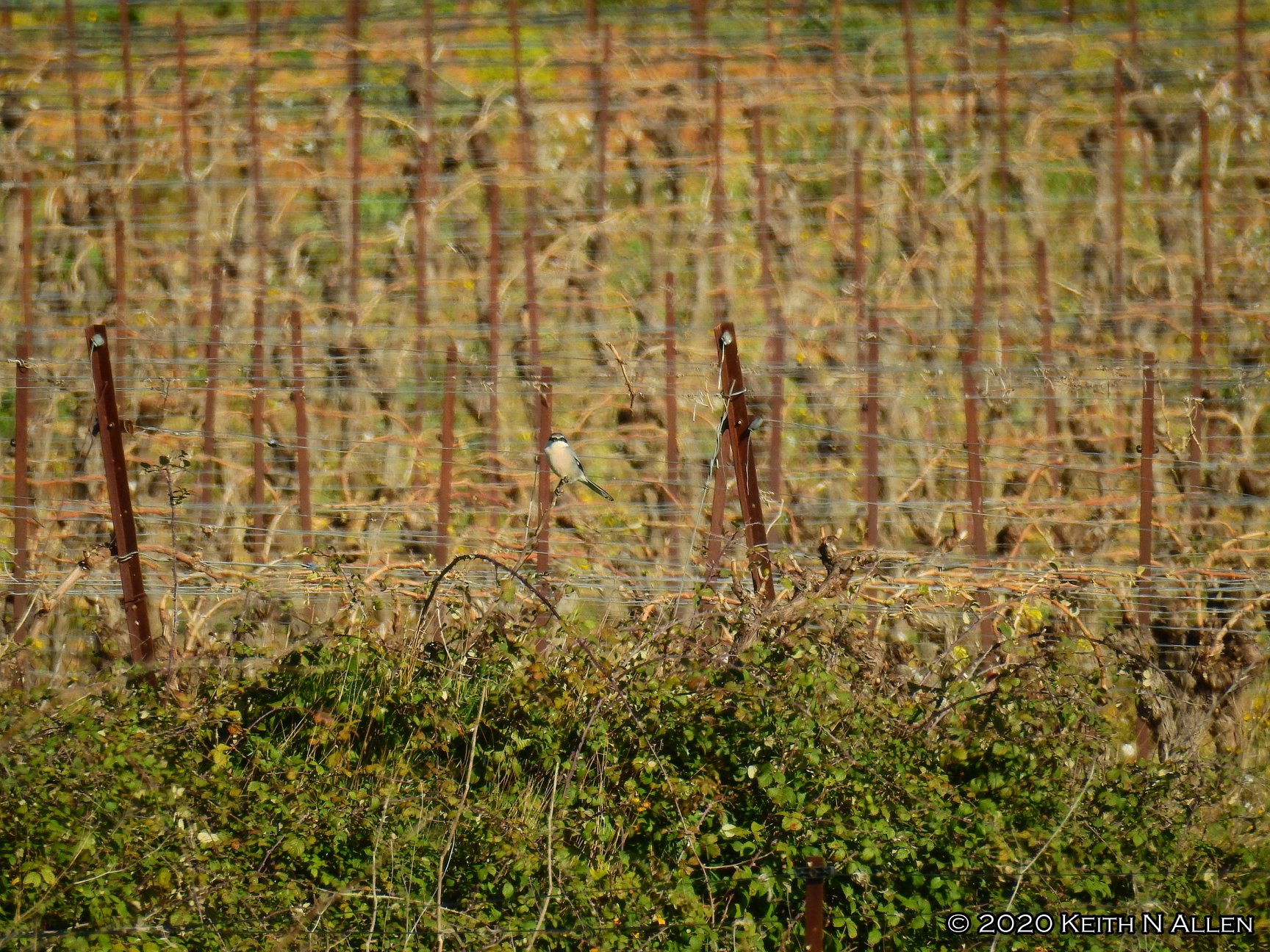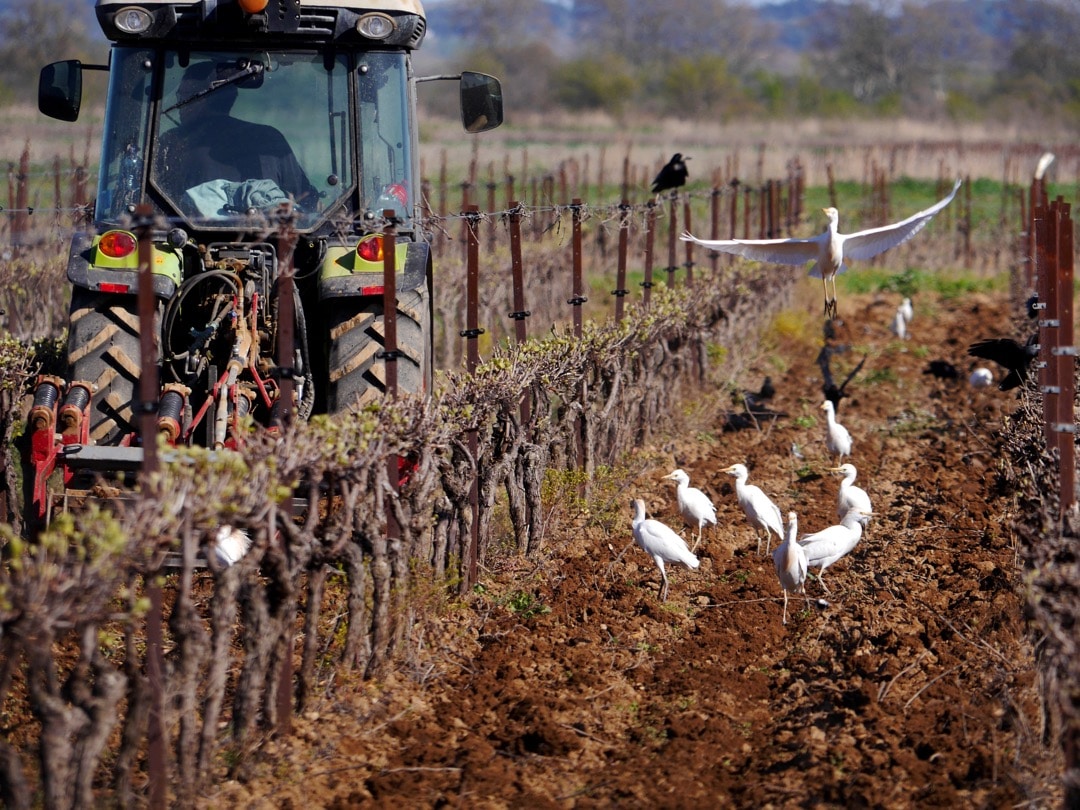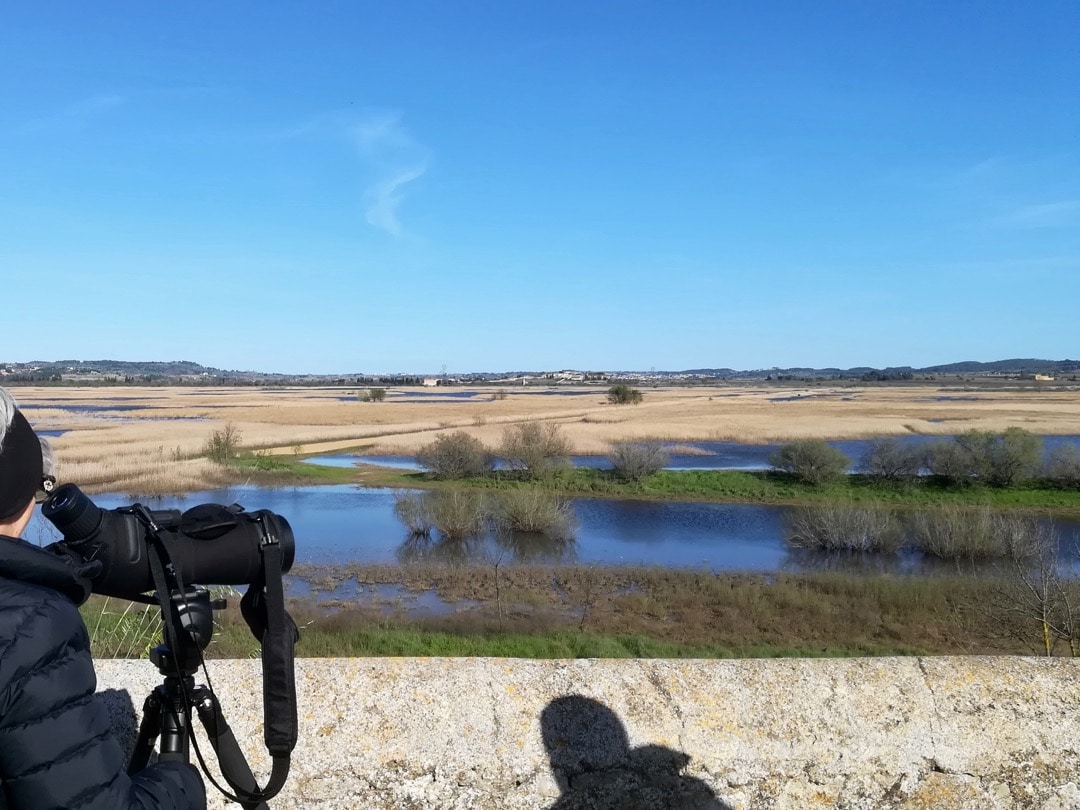BLDT02 – Saturday 14th March 2020 – Around Ouveillan
Clear blue skies and glorious sunshine, temps ranging from 6°C to 17°C+
Summary: A great day’s birding with a total of 59 species including Great spotted cuckoo, Iberian shrike and Short-toed eagle
Great spotted cuckoo and Iberian grey shrike
Crossing to the eastern side of the D13, we wanted to bird this area in morning light as well as afternoon light. The scrubby fallow land dotted with trees and shrubs, near the ruined Cistercian grange of Fontcalvy, is a well known spot for both Great spotted cuckoo and Iberian grey shrike and sure enough Karline found us both species quite quickly. The shrike were clearly showing the pinkish breast/belly and were perching nicely for us on various trees, bushes and vine trellising, allowing everyone really good views. The two GSCs were not quite so cooperative, playing hide and seek in an almond tree at the corner of the vineyard below us, but also on occasion sitting out in good view, their noisy call making them easier to follow. On migration from this spot, we saw Black kite, a couple of Crag martin and plenty more Chaffinch. Crested lark and a very smart Stonechat in the vineyard and a Reed bunting in the reeds were good finds too, as was a Skylark singing overhead and a Meadow pipit in the distance.
We all heard a Hoopoe…
Rooks, Jackdaws and Cattle egrets following a tractor…
As we headed off to end the day with a scan of the Capestang marsh, we passed a farmer ploughing his vines, being followed by a couple of Rooks (which are not common at all around these parts!), plenty of Jackdaws and a group of Cattle egrets – quite an eclectic mix! There was also quite a group of White wagtail – probably stopping over on migration. Also on our way to Montels we saw a Sparrowhawk using one of the vine posts as a perch.
The Capestang marshes or étang (which give Cap d’estang its name) are made up of a floodable area covering 1,374 hectares, of which 76 % are in the Hérault county and 24 % in the Aude. It is part of the wetland area of the Lower Aude Valley and acts as a flood retention area for the river Aude. We were able to add a good number of species here and particularly enjoyed watching a group of about 25 Glossy ibis fly over. A Barn swallow and Black kite were spotted on migration, whereas resident and summer nesting species included good numbers of Marsh harrier (male and female), plenty of Coot, a pair of displaying Great crested grebe, some Little grebe, the odd Flamingo and a Grey heronry. Shoveler (leaving soon) and Red-crested Pochard (recent arrival) were nice to see too. The Cormorant were using power pylons as a drying rack.
Back to the cars via a quick stop to look at an Ocellated lizard sunning itself on a wall (spotted earlier by Karline). Another great day’s birding! The impressive and interesting bird list came to a grand total of 59 species, the variety of which reflected both the diversity of habitats we had birded during the day and the time of year, with migration really starting to kick-in.
Thanks to all to took part and we look forward to seeing you on future trips when we are all allowed out and about again!
BLDT02-20 Bird list – Ouveillan
|















